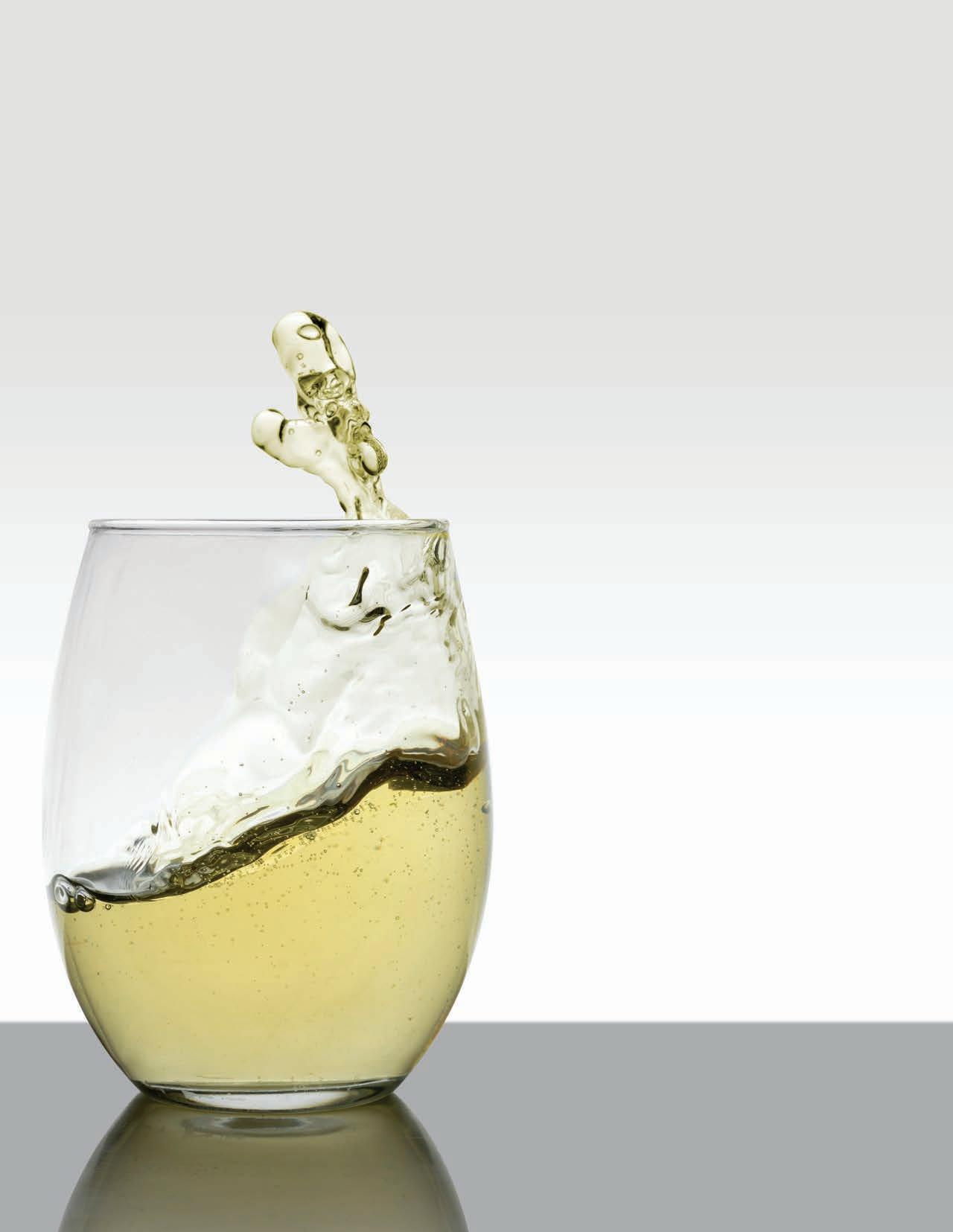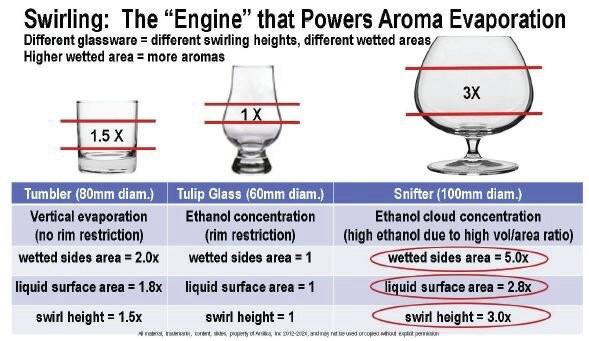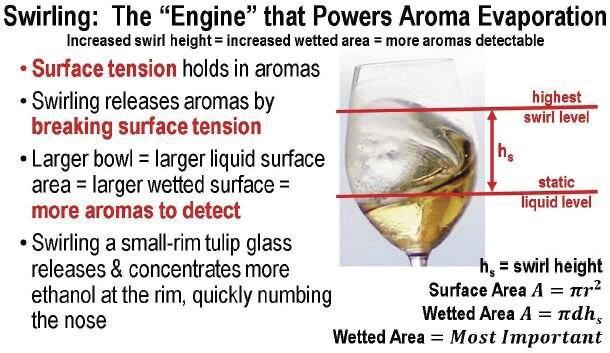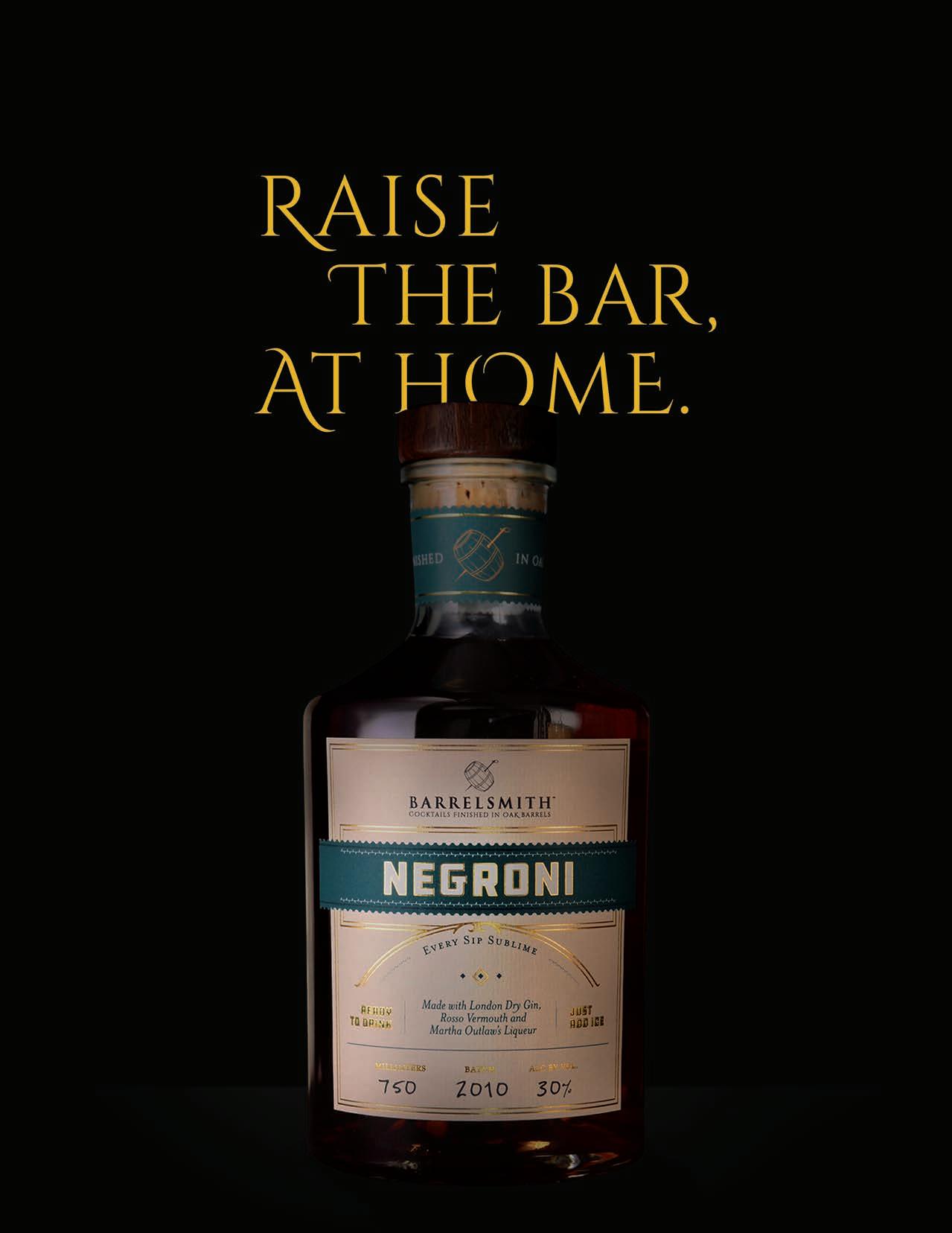
4 minute read
THE SCIENCE OF SPIRITS
TASTING METHODS 5
Swirling Spirits and Busting Myths
By George F Manska, Corporate Strategy Officer, inventor & entrepreneur, Chief Research & Development Arsilica, Inc.
Swirling is an essential part of nosing and evaluating spirits. No swirling = no evaporation = no smell. Swirling enhances evaporation by adding more aromas to the vapor cloud for detection. Practice vigorous swirling to create more evaporation consequently more aromas. Every liquid has an invisible force at its interface with the atmosphere (air) called surface tension. Ever wonder why a water bug can walk on the surface of the water without falling into the water? It is because of surface tension. If surface tension keeps a water bug on the water surface, it can also keep aroma molecules in the liquid of a spirit or wine. Swirling breaks surface tension, allows aromas to escape, and enhances evaporation.
Swirling lets more aromas escape into the air (evaporation) to be detected by the nose.
After swirling, “legs” or tears” caused by the surface tension gradient between water and ethanol improves evaporation (Gibbs-Marangoni effect). Gravity creates vertical shear on vessel sidewalls, disrupting surface tension and improving evaporation as liquid returns to the liquid pool in the glass.
Different glassware designs have different swirling factors: Note that the snifter appears to be the best swirling glass of the three most common shapes/styles. While that is true, the convergent rim shape forces one to place the nose inside the glass where the highest concentration of ethanol interferes with picking up the subtler nuances of the spirit. This is the one case where the best swirling glass is also the highest ethanol concentrator. Ethanol must have somewhere to go to get away from the nose. That’s why wide mouth glasses are better for spirits.

COMMON SWIRLING MYTHS BUSTED:
Myth 1 - Swirling is only for wine:
All spirits, wine, and beers benefit from swirling. Not limited to wine, experienced beer and spirits tasters also swirl to encourage aroma evaporation, especially at low fill levels.
Myth 2 - Don’t swirl beer:
The standard beer pour is close to the top rim, making it difficult to swirl, and the beer’s effervescence, caused by CO2 or N, provides sufficient aroma as the bubbles pop, so swirling is not necessary at full fill. A thick, foamy head hinders odor detection, and slight swirling or slowly rotating a tilted glass to wet the inside wall aids in aroma detection. When partially consumed, the increased headspace provides a swirling or rotating room. Many beer drinkers hold the opinion that wine drinkers are snobs and reject any portrayals resembling wine drinking, including stems and swirling. Experienced beer drinkers swirl slowly or rotate their glass at lower beer levels and decrease effervescence to pick up more aromas.
Myth 3 - Don’t swirl spirits:
For decades, accepted glassware for scotch has been the hard-to-swirl tulip. During the scotch resurgence in the ‘60s and ‘70s, brand ambassadors and educators quickly became aware of Americans’ lack of tolerance to strong ethanol because they were used to adding soda, fruit juice, and ice to spirits to cover the smell of poorly made illegal prohibition booze. They recommended adding water, wafting aromas toward the nose to pre-condition, and warning drinkers not to swirl, all of which diminish nose burn. Scotch sales skyrocketed, but aroma perception suffers from all these methods.

Summary:
The purpose of swirling is to get more aromas out where your nose can pick them up in evaluation. Crutches to alleviate ethanol nose-burn from spirits, such as adding water, wafting, breathing in with mouth open, hinder aroma detection. Use glassware with an open, large rim, such as NEAT or a whiskey tumbler, swirl vigorously, uncover, sniff, and enjoy.
Myth 4 - Swirl clockwise in the northern hemisphere, counterclockwise in the southern:
Unnecessary overthinking. Swirling delivers aromas regardless of direction. It’s all about swirling velocities fast enough to break the surface tension. Vigorous swirling is better. Righthanded drinkers tend to swirl counterclockwise, and left-handed drinkers tend to swirl clockwise.
Placing a lid or a hand over the mouth of the glass while swirling keeps aromas in the glass. Covering will fill the headspace with a higher concentration of aroma molecules. Covering during swirling keeps aromas in the glass, ready for detection when uncovered just under the nose. Serious spirits tasters may use glass caps which must be thoroughly cleaned or disposable sanitary paper caps of the type commonly used in hotel rooms.

George F Manska
Chief of Research and Development, Arsilica, Inc., engineer, inventor of the NEAT glass, and sensory science researcher.
Mission: Replace misinformation with scientific truth through consumer education.
Contact Information:
Phone: 702.332.7305 Email: george@arsilica.com Business mailing address: 452 Silverado Ranch Blvd, Ste #222, Las Vegas, NV, 89183.








